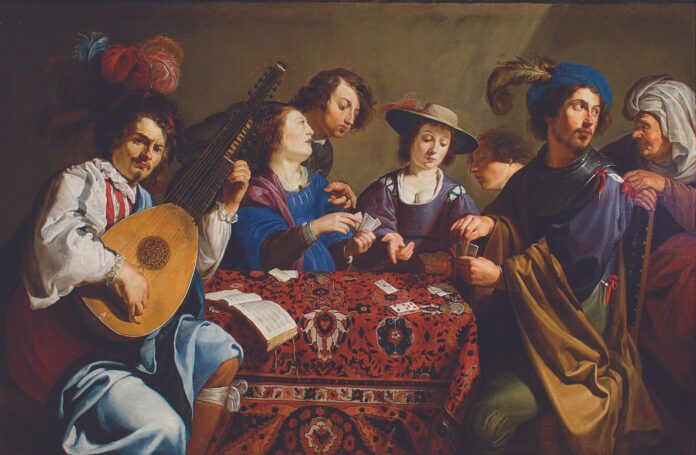Michelangelo Merisi da Caravaggio died in mysterious circumstances in 1610, when he was not yet 40, but his radical originality, marked by exaggerated chiaroscuro and arresting realism, went on without him, influencing painters in Europe’s main centres of art production up until the 1630s. Collectively known now as the Caravaggisti, these artists have been staging a gradual but mounting comeback, as scholars and museum-goers come to appreciate their immense, if somewhat derivative talents. Dutch, French and Italian Caravaggisti have had significant shows in recent years, and now it is Flanders’ turn.
This month, the Museum of Fine Arts Ghent will mount the very first monographic show about the Antwerp painter Theodoor Rombouts (1597-1637), who, following a stay in Italy from 1616 to 1624, settled in back home as a dyed-in-the-wool Caravaggesque painter with a thriving studio. While his works are in the collections of a number of leading museums, he has fallen so far between the cracks of art history that the show’s catalogue will be the first thorough study published, says the curator Frederica Van Dam. Featuring 50 works of art, including newly discovered and freshly cleaned pieces, Theodoor Rombouts: Virtuoso of Flemish Caravaggism draws on loans from the Museo Nacional del Prado and the Musée du Louvre, as well as collections in Eastern Europe and Puerto Rico.

Theodoor Rombouts’s The Tooth Puller (around 1620-25)
Like the Dutch Caravaggisti he communed with in Rome in his early 20s, Rombouts excelled at genre scenes, which he often executed in large, landscape-style formats, such as The Tooth Puller (around 1620-25), which is more than two metres wide. The show will feature two versions—one of them the Prado’s—and new research indicates the amateur dentist is a self-portrait.
Rombouts managed to fuse a southern European chiaroscuro with a northern European appetite for elegant textiles and a lighter palette. Though his oeuvre is relatively small—around 40 paintings, according to Van Dam, 31 of which will be on show in Ghent—the show puts his achievement in a broader context by mixing in paintings by his Caravaggisti contemporaries.
Rombouts’s supreme skill as a painter of musical instruments is revealed when looking at his Lute Player (around 1625), on loan from the Philadelphia Museum of Art, compared to similar works by Holland’s Dirck van Baburen and Hendrick ter Brugghen. Rombouts rendered the instrument with great precision, revealing details of individual strings and the soundboard’s rich patina, whereas the Dutch versions are mere props.
The show also includes Rombouts’s Woman Playing a Guitar (around 1625-30), on loan from a private collection, which Van Dam cites as a new discovery.
Baroque’s big beasts
Rombouts achieved great fame in Antwerp during his short lifetime, and his admirers included Anthony van Dyck (whose sublime portrait of Rombouts, at Munich’s Alte Pinakothek, cannot be loaned). Rather than competing with Peter Paul Rubens—Antwerp’s, and arguably Europe’s, dominant artist at the time—or Van Dyck himself, Rombouts relied on those genre scenes, along with religious commissions in smaller Flemish towns, to carve his own niche in a crowded market. And it was the posthumous prestige of those two giants that has kept Rombouts’ achievement in the shadows, Van Dam says.
The artist’s genre works would have originally had a moralising message. The scenes of card players, on loan from museums in Antwerp and Warsaw, were pageant-filled warnings about the dangers of gambling. Today we may worry less about card-playing as a source of societal strife and concentrate instead on the great pleasure these works can give us, with their gorgeous colours and riveting compositions.
Rombouts is “technically a great painter”, says Wayne Franits, a professor of art history at Syracuse University and a noted scholar of Holland’s Utrecht Caravaggisti, who has contributed to the show’s catalogue. “There is little doubt about it—he just is.”
• Theodoor Rombouts: Virtuoso of Flemish Caravaggism, Museum of Fine Arts Ghent, 21 January-23 April

























